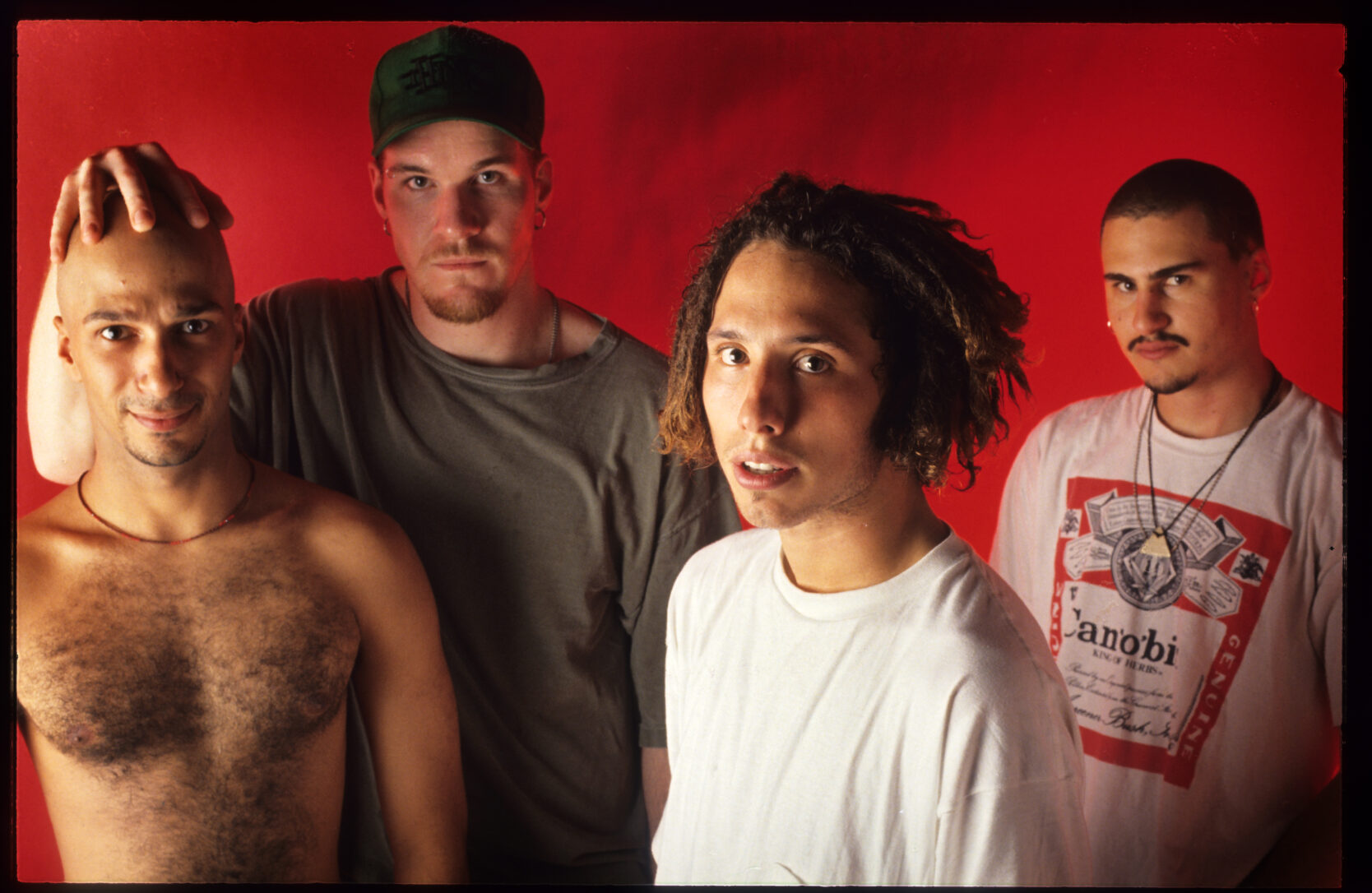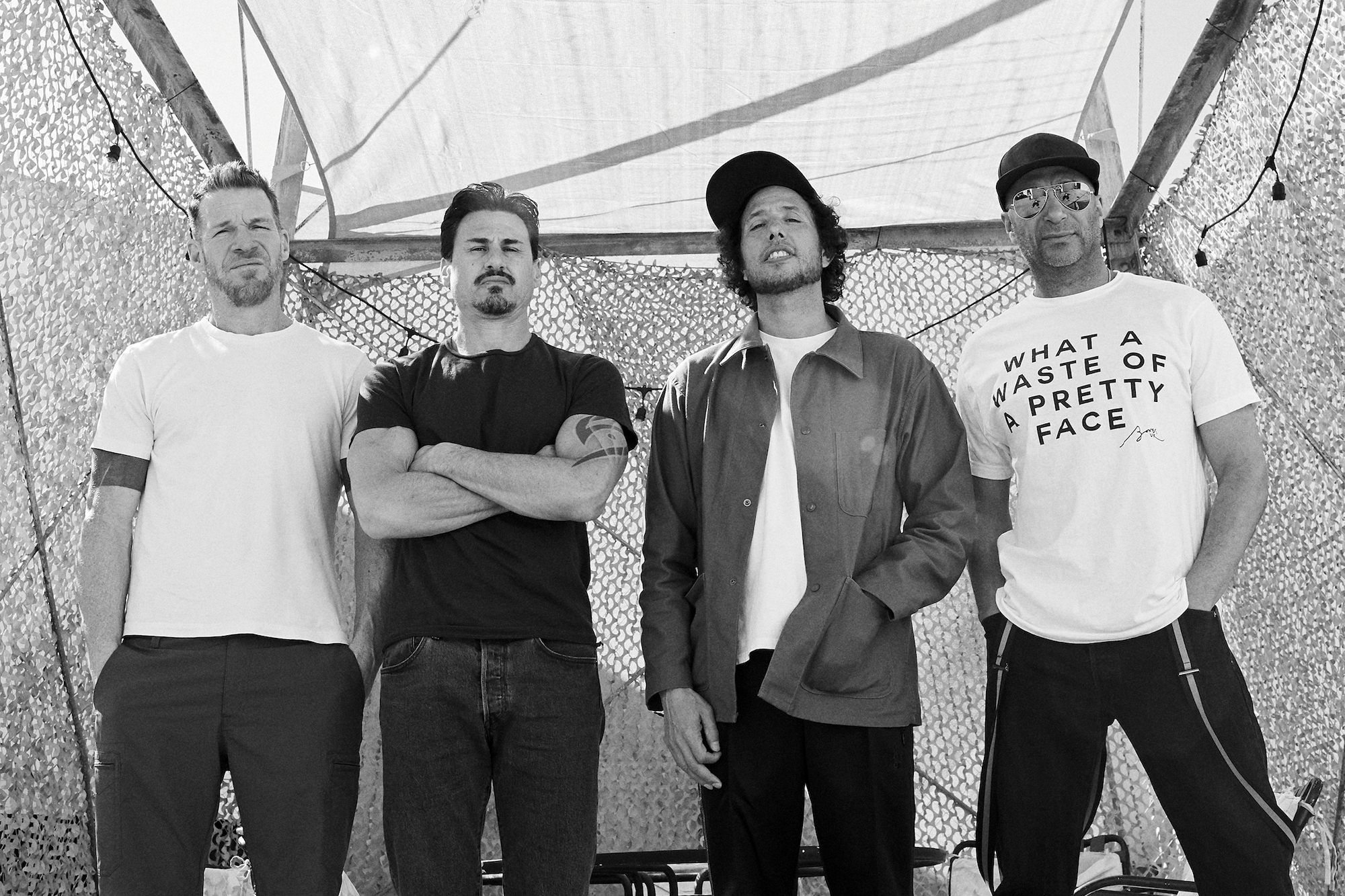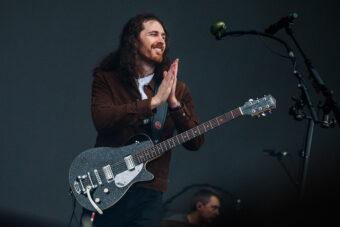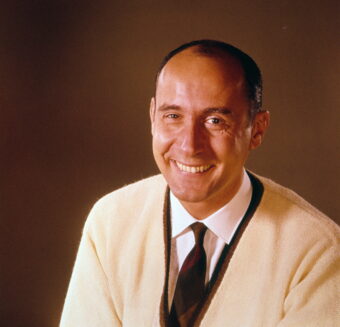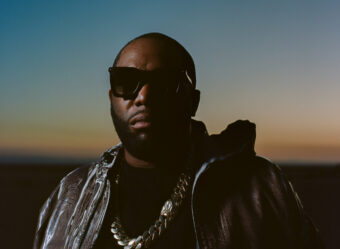With lyrics comparing cops to Klansmen, a free-noise breakdown, and a bridge containing “FUCK YOU” repeated no less than 16 times, rap-rock agitators Rage Against the Machine didn’t expect “Killing in the Name,” the first single from their self-titled 1992 debut, to be a hit. And it wasn’t. At least not in the United States, where a choppy, radio-sanitized edit and gritty live-from-the-pit clip failed to get its radical fusion of metal, rap, and sci-fi guitar wonkery on any chart. But in post-Sex Pistols, post-KLF Europe, where both radio and video outlets embraced the whole “fuck you, I won’t do what you tell me” thing, it was a tour de force, even reaching No. 26 in the U.K.
These four extremely pissed-off men from Los Angeles took a daring stab at fusing rap and metal at a time when the only well-known success stories were somewhat novel one-offs between Aerosmith and Run-DMC and Public Enemy and Anthrax. Their debut seethes with revolutionary fury, and it still sounds fresh on the lavishly reissued Rage Against the Machine XX, a remastered redux that includes demos, B-sides, live DVDs, and vinyl in its various incarnations. With constant touring, vocalist Zack de la Rocha, guitarist Tom Morello, bassist Tim Commerford, and drummer Brad Wilk delivered some of the loudest protest music in American history; and “Killing in the Name,” a popular penultimate song on circa 1992 setlists, become one of the group’s trademarks. When RATM kicks into its head-knocking groove, the sound reaches out like a net and takes hold of the crowd: An audience pogoing to the song at Holland’s Pinkpop festival in 1994 registered 1.1 on the Richter scale.
Since its release, the track’s impact has rippled into some unusual places. Jam-rock titans Phish have covered it, funk-metal goofs Infectious Grooves parodied it for a diss track, comedian-provocateur Bill Hicks closed some shows with it (“a badge of honor,” says Morello), and, in a darkly ironic twist, American interrogators used it torture prisoners at Guantanamo. In 2009, the song served as the centerpiece of a U.K. Facebook campaign to end the The X Factor‘s streak of Christmas No. 1s…and succeeded. Despite having never been a “hit,” it has become maybe the most important — and inimitable — part of Rage Against the Machine’s canon.
For Morello, its staying power has been a surprise. “On one early tour stop in Sheffield or Manchester, I went out to a club with our tour manager,” the guitarist recalls. “As we stood there, they were bumping ‘Killing in the Name,’ and people were just going ape-shit. He said, ‘You guys may write better songs, more sophisticated songs, you may make many records that are critically acclaimed, but I have a feeling that this is a song that people are going to remember you guys for 20 years from now.’ And at the time, I was thinking, 20 years from now? Who’s going to remember anything about what we’re doing?”
What do you remember about writing “Killing in the Name”?
Tom Morello: I was giving a guitar lesson about drop-D tuning. And in the midst of demonstrating that tuning, a couple of the riffs from “Killing in the Name” occurred. They sort of spontaneously combusted on my fingers. I had my little RadioShack $20 recording device, so I stopped the lesson and just recorded those and brought it into rehearsal. Timmy C. contributed that kind of off-kilter riff at the beginning, and Brad, that beat, and there are Zack’s fiery lyrics. We had written five or six songs right away, and it was the first song of the second batch of songs that we wrote.
How did people react to the lyrics at the time?
Morello: After our second show ever, we had record-company interest in the band. So these executives were coming down to our grimy studio in the San Fernando Valley. We played for Atlantic Records, I think, and we finished with “Killing in the Name,” which is just a bowdlerizing, “Fuck you, I won’t do what you tell me,” and these guys are just pinned to the wall. I remember one of the executives squeaking after the song was done, “So is that the direction you’re heading in?” [Laughs]
How did your guitar solo evolve on the song? The one on the demo that’s coming with the reissue is like a…
Morello: Blues-rock solo? Well I had just gotten that DigiTech Whammy pedal and was exploring it. It was a harmonizer in a pedal, controlled in the same way as a wah-wah pedal. In a lot of those early songs, I was trying to approximate Dr. Dre’s production or Cypress Hill or the Bomb Squad, Terminator X stuff. And that provided the high-pitch wailing of some of that music. So I know I went hog-wild on a number of songs, one of them being “Killing in the Name.”
Before signing on to the project, what was your impression of the song?
GGGarth Richardson, producer: I was actually shocked. I thought it was an anthem. From way back then until now, every kid still feels the actual same way. Every kid hates their parents when they’re 16, 17 years old.How did the recording sessions for the record go?
Morello: From the very first shows, the music always felt alive and powerful. We went into the studio to record, we were having a very difficult time capturing that. The way we turned the corner was one night we invited a bunch of friends into the studio and basically just played the set. So it was like a show, rather than, “Now we’re going to record the hi-hat.” We got about half of the basic tracks on the record that night. It sounded like Rage Against the Machine. It took a long time to finish that record from my recollection.
Richardson: I remember when we were done with “Killing in the Name,” and we played it back, we all smiled and went, “Holy shit. It’s real.”
Did the label ask that the song be censored at all?
Morello: There was a musical discussion. My memory is that they thought the part where the song kind of stops, that that stopped the flow of an otherwise rampaging rhino of a song. And we disagreed.
Richardson: Their A&R guy Michael Goldstone called me up. He wanted us to cut the song down in half. I was on the phone with him and he said, “Hey guys, he wants those out.” And they went, “Fuck you.” And then Michael said, “Fuck you,” and they said, “Fuck you,” and there was this huge war happening. So I said, “Michael, the part has to stay in. It’s a great part.” And he fought us on it. But you know what? He lost, which was really good.
Morello: Before Michael Goldstone is disparaged as some sort of a record-company shill, trying to commercialize the band: He’s the one that suggested that be the first single without editing it for lyrical content. We were all like, “Really, you want the first single to be the one that says, ‘Fuck you, I won’t do what you tell me,’ 16 times, plus a ‘motherfucker’?” And he said, “Yes.” We were like, “All right!”
Who made the video for the song?
Morello: It was shot by another one of my guitar students. It was made for, I think, literally $500. That video became a sensation across the European continent, in part because you could hear all the lyrics to it. So while we were in the United States, opening up clubs for House of Pain, we had become this huge teen phenomenon in the U.K.
Do any of the shows from the video shoot at the Whisky and the Club With No Name stand out?
Morello: I think at the Whisky, we might have been an opening band, but the place was just packed and some people knew the songs from a couple shows. It just felt like the chemistry that the four of us had was something that I had never been around before, and we were having these big shows beginning with our second concert. At the time, there were bands like Jane’s Addiction and Nirvana and Soundgarden, but none of them were of mixed ethnicity. And none of them had the radical politics of Rage Against the Machine. And none of them combined what were at the time warring genres of music. Now everybody’s got Lil Wayne and Sepultura in their iPod. That was not the case in 1991. And so imagine our surprise when this band that combined punk, hip-hop, and hard-rock music, everybody came after the first couple shows. It was crazy.
You burned an American flag while playing the song during Woodstock ’99. How far in advance had you planned that?
Morello: Well, that’s something that Timmy had planned for that song and we did not know about. The idea of it is certainly one that falls within the framework of Rage Against the Machine’s politics, but the head-numbing, intoxicating smell of the lighter fluid that the flag had been drenched with throughout the entire show was making the band woozy, and we’re like, “What’s going on? Did someone open a vat of glue or something?” In particular, Brad was getting ready to pass out. We didn’t know the source of it until Timmy’s surprise came at the end. No one was more surprised than us. Made for some good photos.
After Rage Against the Machine broke up, you continued playing parts of the song in Audioslave. How did that go over?
Morello: Audioslave concerts were very fun to play, but when we would bust out those Rage riffs, it was a reminder of the reptilian strength of Rage Against the Machine. People were enjoying the concerts and going wild, and then we’d drop the “Killing in the Name” riff and places would become unhinged.
In the late 2000s, the Infectious Grooves song that was a reaction to “Killing in the Name”?
Morello: No.
How did the The X Factor Facebook campaign come together?
Jon Morter, co-organizer, “Killing in the Name” Christmas campaign: The U.K. had changed the rules on what songs could chart. They announced that any download, in theory, could be a single. The year before I did a campaign to get Rick Astley’s “Never Gonna Give You Up” to chart, purely as a joke. A year later, we thought, let’s do it again, but this time it would be serious. Every single year The X-Factor was getting the No. 1 single. It was getting tiresome for a lot of people. I’m a big fan, and I thought the song “Killing in the Name” would be the antithesis of anything The X-Factor would put out.
What did you think of it?
Morello: On one hand, it’s a fun, flippant thing to give the finger to commercial pop music being rammed down a country’s throat, but on the other hand, it shows that there’s a David for every Goliath. People working together in solidarity and finding inspiration in, at the time, a 17-year-old song, did the unthinkable and the impossible. And they toppled the X-Factor monolith and it was awesome. It was really one of the highlights of the entire Rage experience for me personally.
You played a concert to celebrate in London’s Finsbury park in 2010, which is available in one edition of the XX reissue. What did that show mean to you?
Morello: It was really one of the best shows Rage Against the Machine ever played. It’s certainly one of the wildest crowds that ever stood at a rock show. It was about them. I hate to even describe them as fans; it was, like, the people rose up and decided that the bullshit that was being handed to them, they weren’t going to take it. They were going to make another choice. When we played, we had all these quotes that were pulled on the screens from leading up to with where Simon Cowell guarantees victory, and all these betting booking agents — they treat it like the Kentucky Derby there. People wager on what’s going to be the Christmas No. 1. And they’re sort of guaranteeing that X-Factor‘s going to win, and these people did it themselves. It was pretty astounding. We invited Simon Cowell to MC the show but we never heard from him. We were just proud and honored to be the subject of that musical uprising.
What was the reaction like when you played “Killing in the Name”?
Morello: What do you imagine? [Laughs] People seemed to enjoy it. [Laughs]
Morter: To me, personally, when they were playing that song to a crowd of people, where if it weren’t for us guys, it wouldn’t have happened, it was absolutely insane. When it was done, Rage decided they would give 100 percent of the profits to Shelter, the charity we were working with, as well. They didn’t have to do that. We didn’t ask them to donate their song. We felt quite humbled about it ourselves.
Since this is the song you’ve played probably more than any other, how does it fit into a set list?
Morello: A show could go well, it could go poorly, but if you play this one at the end, you just can’t lose. [Laughs] It is such a beautiful sight when that last refrain kicks in and, whether it’s from the early days when it was at a small venue or whether it was in the biggest stadiums and festivals, you could just see people jumping.

